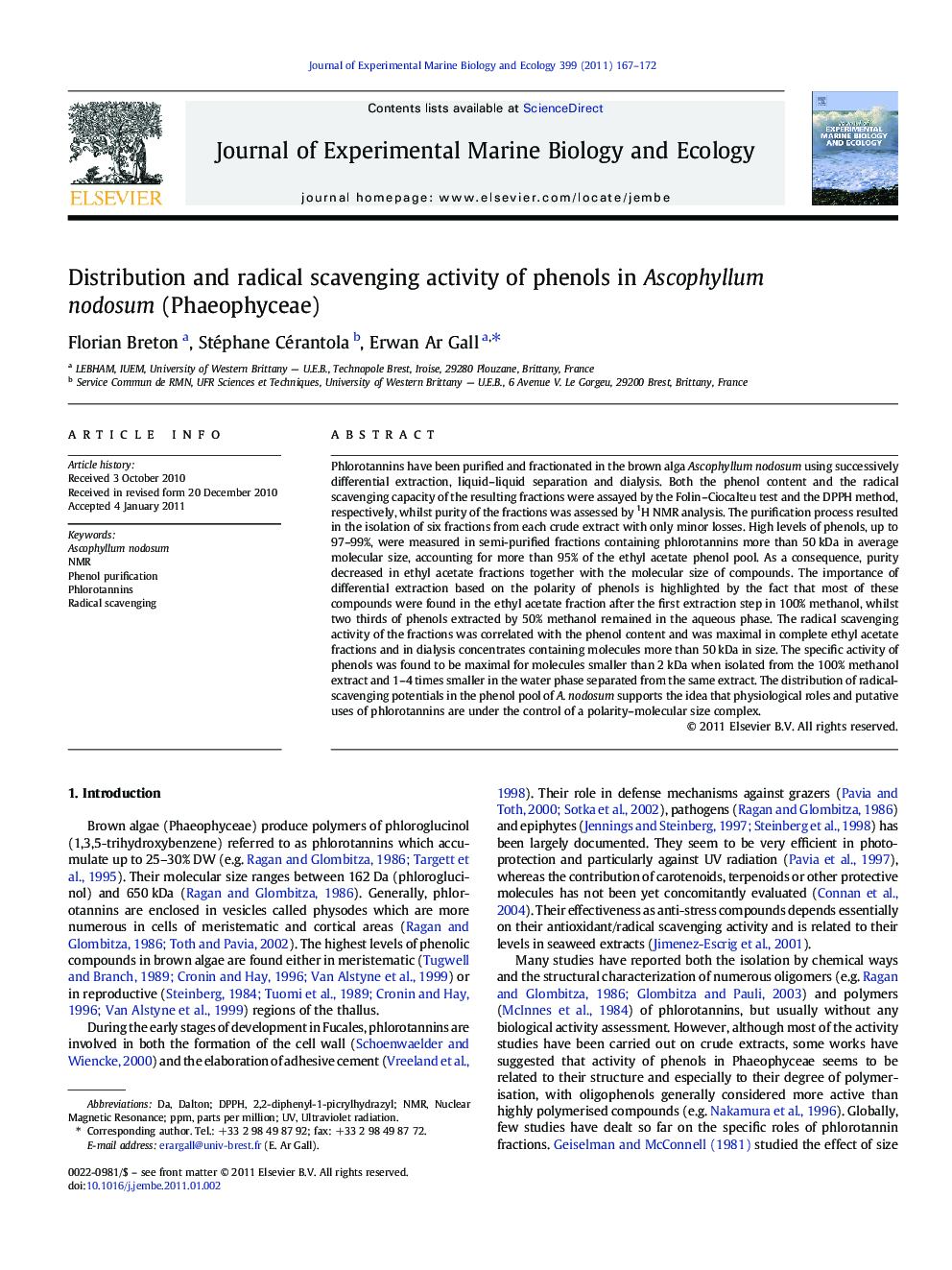| کد مقاله | کد نشریه | سال انتشار | مقاله انگلیسی | نسخه تمام متن |
|---|---|---|---|---|
| 4396397 | 1305820 | 2011 | 6 صفحه PDF | دانلود رایگان |

Phlorotannins have been purified and fractionated in the brown alga Ascophyllum nodosum using successively differential extraction, liquid–liquid separation and dialysis. Both the phenol content and the radical scavenging capacity of the resulting fractions were assayed by the Folin–Ciocalteu test and the DPPH method, respectively, whilst purity of the fractions was assessed by 1H NMR analysis. The purification process resulted in the isolation of six fractions from each crude extract with only minor losses. High levels of phenols, up to 97–99%, were measured in semi-purified fractions containing phlorotannins more than 50 kDa in average molecular size, accounting for more than 95% of the ethyl acetate phenol pool. As a consequence, purity decreased in ethyl acetate fractions together with the molecular size of compounds. The importance of differential extraction based on the polarity of phenols is highlighted by the fact that most of these compounds were found in the ethyl acetate fraction after the first extraction step in 100% methanol, whilst two thirds of phenols extracted by 50% methanol remained in the aqueous phase. The radical scavenging activity of the fractions was correlated with the phenol content and was maximal in complete ethyl acetate fractions and in dialysis concentrates containing molecules more than 50 kDa in size. The specific activity of phenols was found to be maximal for molecules smaller than 2 kDa when isolated from the 100% methanol extract and 1–4 times smaller in the water phase separated from the same extract. The distribution of radical-scavenging potentials in the phenol pool of A. nodosum supports the idea that physiological roles and putative uses of phlorotannins are under the control of a polarity–molecular size complex.
Research Highlights
► Development of a fractionating process of phlorotannins in the brown alga Ascophyllum.
► Up to 97–99% phenols were measured in fractions with phlorotannins above 50 kDa.
► Purity decreased in ethyl acetate fractions with the molecular size of compounds.
► Radical scavenging activity of the fractions was correlated with the phenol content.
► Roles of phlorotannins seem to be controlled by a polarity–molecular size complex.
Journal: Journal of Experimental Marine Biology and Ecology - Volume 399, Issue 2, 1 April 2011, Pages 167–172